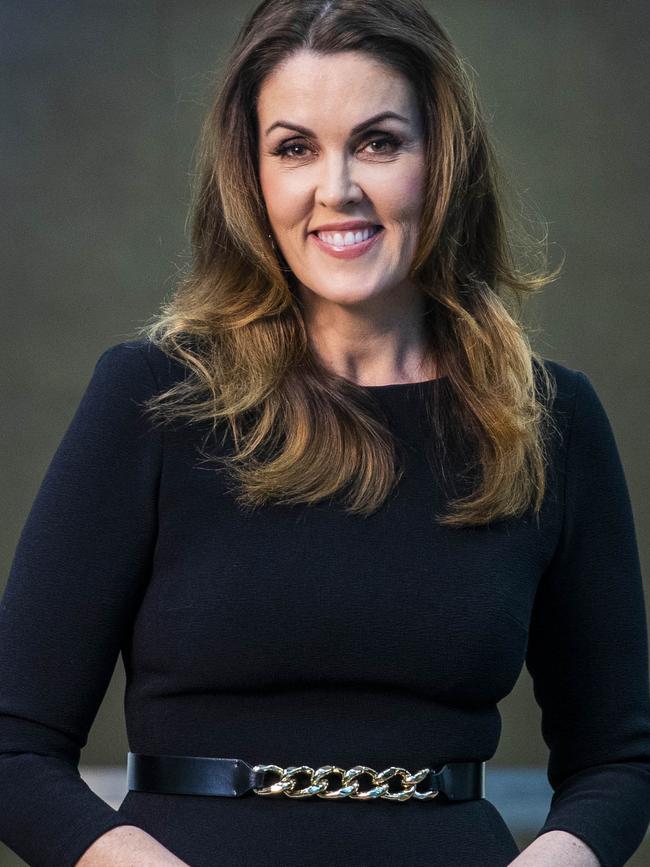Peta Credlin: Covid modelling proves why climate science should also be questioned
The modelling around Covid predicted devastating consequences for Australia that never eventuated, so could the science around climate change predictions also be wrong, asks Peta Credlin.
Opinion
Don't miss out on the headlines from Opinion. Followed categories will be added to My News.
Why is it that Melbourne’s liberation last Friday came on a day with almost 2200 Covid cases; yet its initial incarceration eleven weeks earlier had been prompted by just eight cases?
Ok, vaccination rates had risen from 20 to 70 per cent in the interim.
It’s still worth posing the question: how could eight cases be a catastrophe, yet 2200 cases be a cause for celebration; other than in a topsy-turvy world where “following the science” just means following the leader? Never has adhering to expert advice meant so many contradictory anomalies, and so much hardship for so many people.
Even on “Freedom Day” (thank you government for giving back what was never yours to take away) people from NSW could enter Victoria and go anywhere while Melbournians were still banned from regional areas; and people were once again allowed inside each other’s homes but not inside a “non-essential” retail shop?
It’s been clear for many months now, that while Covid posed a grave risk to people who were very old or very sick, once the vulnerable had been vaccinated, we could start to treat Covid like most other diseases because vaccinations cut the risk of hospitalisation and death by about 90 per cent. But this settled science on Covid hasn’t stopped different approaches in different states as well as clearly absurd applications of the “science”: such as the Queensland rule that briefly required mask wearing while driving a car alone; the Victorian rules that allowed coffee drinking in parks but not beer or wine, with kids’ playgrounds deemed dangerous and shut down but not the heroin injecting room; and those absurd curfew rules, with no scientific basis at all!
In other words, not only did the same science produce very different policy responses, but supposedly “following the science” included numerous measures that were, frankly, grandstanding by premiers who’ve used and abused “health science” to score political points. But if the settled science of Covid can be exploited like this, what about the science of climate change?

Let’s accept that the climate is changing, and that mankind’s carbon dioxide emissions are the cause. Why does it automatically follow that the fossil fuel industry must be closed down in the next couple of decades, regardless of the cost; and more importantly, regardless of the fact that most of the world’s biggest emitters won’t follow suit, so that countries like ours end up massively disadvantaged with the planet hardly better off? If it’s finally become acceptable to count the costs of endless lockdowns to prevent Covid; why can’t we also question the costs of measures to prevent climate change and ask ourselves: can it be done differently and better?
If there’s one thing the pandemic should have taught us, it’s that modelling is only as good as the modellers’ assumptions. Initially, the expert modellers said that 150,000 plus Australians would die of Covid. To date, only Victoria has breached the 1000 deaths threshold. Even during the current outbreak, predictions of thousands of hospital admissions with intensive care units overwhelmed have been massively overblown. Either modelling exists to make astrology look good or the modellers have a catastrophe bias.
As our government prepares to commit us to net zero emissions by 2050 on the basis of modelling that the planet otherwise faces environmental disaster; yet that net zero can be achieved without any significant economic pain, it’s worth asking why the climate modelling can be trusted when the epidemiological modelling clearly couldn’t; and why the climate “experts” are both unanimous and infallible while the health experts clearly weren’t.
Before the last election, the Prime Minister used Liberal Party modelling showing that a 45 per cent cut to emissions by 2030 would cumulatively cost 336,000 jobs, cut wages by $9000 and slash nearly half a trillion dollars from GDP in order to label Labor’s policy as “reckless”. Now, he says that an even bigger cut will actually make us richer, but hasn’t released the modelling nor adequately dealt with the fact, as confirmed by the International Energy Agency, that much of the so-called technology to get to net zero is either unproven or hasn’t even been invented yet.
Right now, fossil fuels provide 83 per cent of the world’s total primary energy. That’s just four percentage points down over the past 30 years, despite all the billions in subsidies for renewables. Yet if the PM is to be believed, Australia can keep increasing our coal and gas exports at the same time as the world reduces its fossil fuel dependence to just 20 per cent; and it will all be done by “technology not taxes” even though the British Treasury has estimated that achieving net zero will require a carbon price of $295 a tonne by 2050 (compared to Julia Gillard’s carbon tax of just $23 a tonne). And that’s even with Britain using zero-emissions nuclear power which we still ban here (even though it’s our exported uranium that drives it).
On current technology, net zero means no cement, no steel, no aluminium, no air travel, no petrol or diesel vehicles and no eating beef or dairy. Yet this is supposed to be a painless transition that will make us richer, not poorer. Perhaps the experts could next model the likelihood that pigs might fly.
WATCH PETA ON CREDLIN ON SKY NEWS, WEEKNIGHTS AT 6PM





